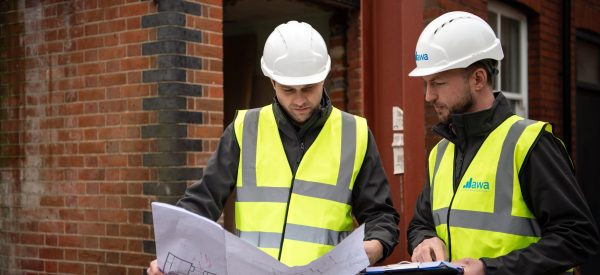
The importance of getting the right foundation solutions for your construction project should not be underestimated. It underpins the whole project’s success, so it needs to be right. Our dedicated team of engineers is committed to guiding you through every aspect of ground foundations. Our approach guarantees precision and reliability and provides peace of mind.
Find out more

Green oak timber refers to unseasoned oak that is freshly cut, hence the term ‘green’. It is typically cut within 3 to 18 months after the tree is felled, and retains a high moisture content. Green oak frames are commonly used as the primary structure of a building, rather than steel or masonry, formed with beams, posts, braces, and trusses. The components are joined with traditional carpentry techniques, such as pegged mortise-and-tenon or dovetail joints. Whilst green oak can be expensive it is cheaper than seasoned oak, as this type of wood is air dried or kiln dried therefore has additional costs involved, whereas green oak will dry over time in its final location.
Find out more

In the world of construction, there’s an innovation gaining momentum: Insulated Concrete Formwork (ICF). Despite its modest profile here in the UK, ICF is beginning to stand out with its benefits in energy efficiency and structural integrity. Join us as we shed light on this construction method.
Find out more

Simply put, an industrial concrete floor slab is the working platform of an industrial building. It is the most important part of a building because all operations are supported by it. It is an exposed surface that needs to be robust, flat and crack-free.
Find out more

RAAC (Reinforced Autoclaved Aerated Concrete), once a widely used construction material, has recently come under scrutiny due to safety concerns, especially in public sector buildings. If you’re unsure whether RAAC was used in your building, it’s important to understand the potential risks and the steps you may need to take—making it essential to consult the right structural engineer.
Find out more

After a decade hiatus, Brian has returned to AWA Engineers, warmly remarking, “The only company I have ever considered returning to is here”. So, what lured him back?
Find out more

Structural engineering is a specialism within the field of civil engineering. It focuses on the design, framework, and construction of buildings and structures to ensure their safety, durability, and functionality.
Find out more

Balancing building design and aesthetics with safety, longevity, and durability: the roles of architects and structural engineers in a construction project are closely aligned and equally invaluable to a successful project outcome.
Find out more

An interview with AWAs founder, Andrew Waring, who has been the consulting engineer for Salisbury Cathedral since 1992.
Find out more








